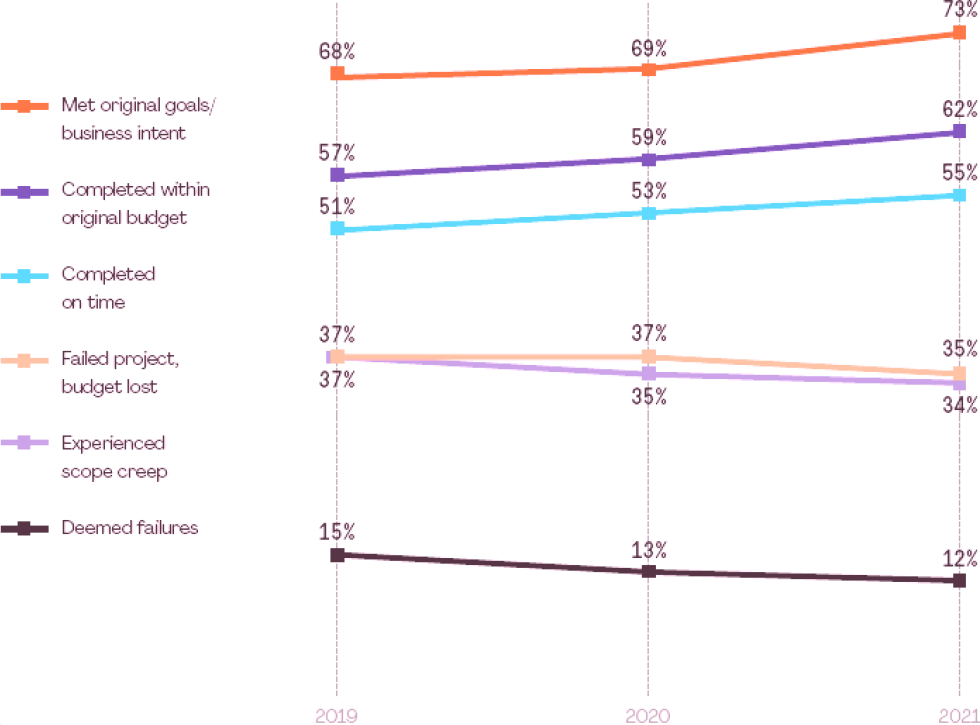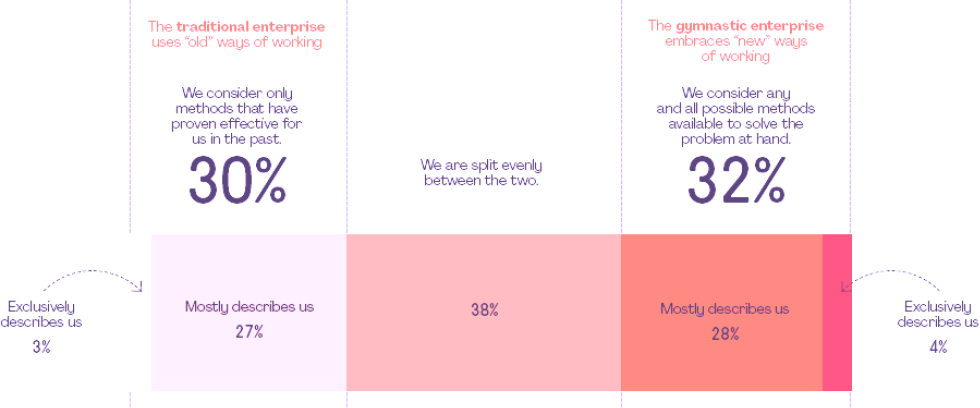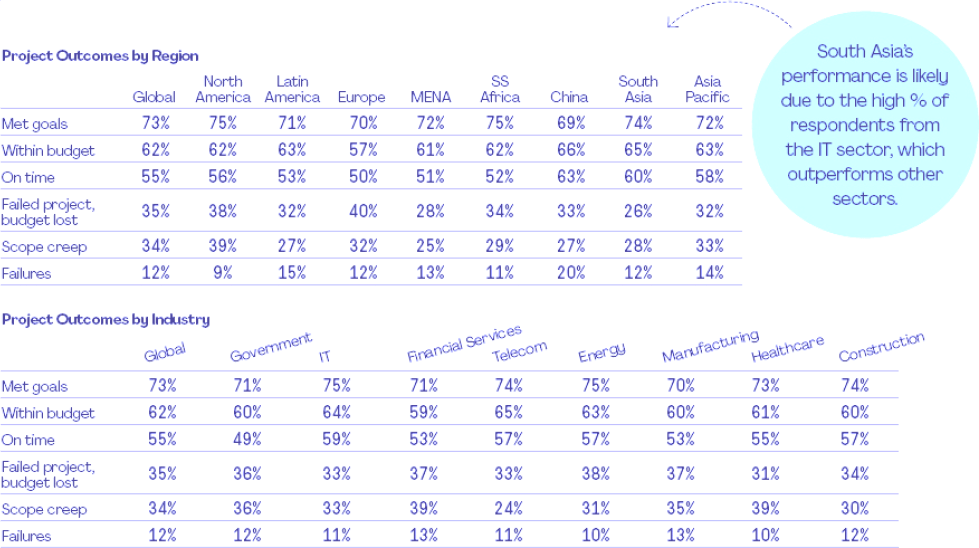Project Management Guide
Project Management Guide
What Is Project Management?
What Is a Project?
Why Is Project Management Important?
Project Life Cycle Phases
- Project Initiation
- Project Planning
- Project Execution
- Project Monitoring
- Project Closure
Project Management Methodologies
- Waterfall Project Management
- Critical Path Method
- Critical Chain Project Management
- Agile Project Management
- Scrum Project Management
- Kanban Project Management
- Lean Project Management
- Six Sigma Project Management
- PRINCE2
- PRiSM
- PMBOK Method
Project Management FAQ
What is project management approach?
COVID-19 has transformed the way project planning works. Organizations are truly stepping up their project management game, despite the deep economic woes. Don’t believe us? Consider PMI’s “Pulse of the Profession” (2021) report, which says:
“Although many planned projects were put on hold, of those that did forge ahead, more met original goals and business intent, and more were completed within budget and on time, compared to last year’s:”

Here’s the latest snapshot of how organizations are faring with respect to project outcomes by Region and Industry:

So what has driven organizations to deliver remarkable outcomes? There are two types of project management methodologies that come with their own pros and cons, and work differently for varying enterprises depending on their end-goal and project type.
According to the same report, there are two types of organizations:
- Gymnast enterprises that “focus more on outcomes than process, selecting the very best ways of working from a landscape of possibilities.”
- Traditional enterprises that “favor extensively planned and methodical approaches” and “use people skills to motivate and facilitate autonomous decision-making.”
The learning: The report differentiates the two methodology styles by claiming that when it comes to traditional enterprises, “their structures and ways of working remain very rigid in the midst of change.” These predictive enterprises “favor extensively planned and methodical approaches; but can also be agile enterprises that are strongly skewed toward iterative, adaptive approaches.” In contrast, “Gymnastic enterprises can apply any of these ways of working, depending on what’s appropriate for the situation.”

Now that you have a basic understanding of the two, let’s look at the various project management methods that organizations can leverage to pivot and thrive in today’s uncertain business environment. Without further delay, let’s get the ball rolling.
Two Types of Management Approaches Project Teams Should Know
1. Traditional Project Management Approaches: For Projects that Run in a Sequential Cycle
Industry Fit: Industries that produce physical products such as Manufacturing, Engineering, etc.
The traditional project management approach is practiced universally and includes five concrete stages of the project lifecycle:
- Initiation
- Planning
- Execution
- Control/monitor
- Project closing
Plus, it involves specific techniques that are needed for effective project planning, estimation, and control of the activities. The end goal of this type of project management framework is to complete the project on time and within the stipulated budget.
This approach works best for projects that include a series of repetitive activities and generally follow a set sequence. You can use diverse project management tools such as Sinnaps and Gantt-flow to define the task sequence.
The various types of approaches to project management for this methodology include:
A. Waterfall Methodology: Execute Project through Phases with Prior Project Planning
Industry Fit: Manufacturing, Construction
Here’s a quick round-up of the waterfall approach characteristics:
– It is one of the most commons approaches to project planning.
– It is a simple sequential approach and is not suited for modern, complex, and demanding projects. In other words, it is good for projects that have linear steps.
– The project requirements are laid out at the beginning of the project, without providing much scope for making changes/iterations during the project process.
– Each stage of the project should be complete before you begin the next one.
– It can be easily replicated for future use.
B. Critical Path Method: For Delivering Projects with Lightning Speed
Industry Fit: Ideal for Smaller or Mid-Sized Projects
Here are the defining characteristics for this type of software development:
– It is a sequential approach and helps determine the activities required to complete a project, the time it will take to complete it, the dependencies between them, and the key milestones.
– Project managers will need to calculate the longest and shortest paths that can help complete the project, which ultimately helps prioritize the key activities.
– It also empowers project managers to prioritize resources.
– It lays emphasis on driving the “most-important” work and involves rescheduling of lower-priority tasks, which may be hindering project progress.
C. Critical Chain Project Management (CCPM): The Best Methodology for When You Have Limited Resources
Industry Fit: Construction, Software Development, Tech Research and Development
The CCPM project methodology comes with the following characteristics:
– It focuses on the resources that are required for each task in the project.
– It involves identifying and allocating resources for the most crucial, high-priority tasks or the “critical chain.”
– It integrates sufficient buffer time for tasks to ensure on-time project delivery.
Now, let’s look at the agile framework of the project development process.
2. Agile Project Management Approaches: For a Collaborative and Iterative Style of Working
Industry Fit: Industries that need to deliver more frequently to the market and improve continuously based on early feedback such as Design Engineering, Construction, Aerospace, Pharmaceutical, etc.
A collaborative and flexible methodology, the agile approach characterizes short development cycles — or “sprints” — that include collecting real-time, empirical feedback as the project progresses. Basically, stakeholders and project managers continually examine the direction of the project during its life cycle and provide feedback that allows the team to make changes for the next rollout of features. As you can imagine, the timelines are less rigid, and the project advances more fluidly.
Consider this case study by Cisco which adopted the Scaled Agile Framework and witnessed the following results:
- 40% decrease in critical and major defects
- 15% increase in defect removal efficiency
- 25% reduction in quality assurance defects
- Happier employees due to reduced after-hours work as well as meetings and calls to attend.
The learning: As a best practice, project teams should adjust as needed– whether it is adapting your methodology to fit your objectives, teams, and processes or whether it is eliminating the use of the chosen methodology (SAFe) in this case for loosely integrated projects where it didn’t make sense to use it in the first place.
Here’s a list of the most popular Agile approaches:
A. Scrum: To Respond Rapidly, Efficiently, and Effectively to Project Change
Industry Fit: Software Development, Retail Logistics, Event Planning
Here are the defining features of this type of agile approach:
– It involves teamwork and disperses the traditional responsibilities of the project manager among the team members.
– The scrum master serves as the leader and facilitator.
B. Kanban: To Improve Project Speed and Quality of Delivery
Industry Fit: Manufacturing, Software Development, Human Resources, Marketing
The typical features of the Kanban project management style include:
– It is ideal for projects with priorities that change constantly.
– The project progresses continuously instead of proceeding in predefined sprint periods.
– Work is driven when needed and when capacity allows.
Consider this case study of Vanguard, one of the world’s largest investment management companies. The organization used data to adapt the Kanban-based approach and meet their goals and needs. While they started out using the Scrum methodology, they quickly pivoted towards Kanban as their team of knowledge workers were becoming chronically overburdened and bottlenecked–known as “Scrum stall” in technical terms.
The learning: The organization was able to accelerate its workflow by engaging in monthly operations reviews with all teams and driving replenishment meetings with mid-level management.
C. Extreme Programming (XP): For Robust Project Development to Ensure High Project Quality
Industry Fit: Ideal for industries whose requirements change frequently
This approach includes the following:
– Initially developed for software engineering, it works for clients who are not sure about what they need from the end product.
– By extension, it includes multiple instances for testing and feedback to get the desired end product.
– The main focus is on driving frequent, complete, and accurate communication within the development team–which is exactly what happened when the U.S. Government adopted the eXtreme Programming approach to add a new capability to the U.S. Strategic Command’s knowledge management system.
The learning: The development team works more efficiently due to better collaboration and could respond to emails quickly. This sped up the decision-making process while allowing team members to stay up-to-date and informed with accurate, real-time information.
D. Adaptive Project Framework (APF): To Constantly Adapt to the Changing Project Environment
Industry Fit: Information Technology
Here’s a quick low-down of this project management style:
– Also suited for IT projects, it requires high levels of flexibility and adaptability.
– Here, the project scope is variable, but the time and cost are constant.
– It helps accommodate unknown factors that may crop up during a project.
– It involves a more “learning by doing” style of work and prepares the team to respond to unexpected situations.
– The team needs to adopt a flexible mindset and constantly learn by re-evaluating results and decisions throughout a project.
– Finally, it requires consistent communication with stakeholders at every level for the team members to work with precision.
The Bottom Line
The project landscape is increasingly becoming more complex and dynamic today. Luckily, there are multiple project management approaches that can be used to can carry out a project successfully and satisfactorily.
Each methodology poses certain benefits and pitfalls that project managers need to be aware of. This is why choosing the right methodology at the start can lay the foundation for successful project completion. You can also choose a hybrid style of project management to get the desired end result–a practice that 89% of project managers follow. So do your homework and research, brainstorm with your team and stakeholders, and zero in on a project management approach that works best for you.
